When I heard that the Texas Stadium would be taken down, I knew that this was something I had to witness. I'm only a marginal Cowboy fan, since I don't follow sports, but the reason that I wanted to be there for the end of this structure was that I was there for the beginning. In 1971, as the stadium was being built, I drove over to the construction site and, with some hesitation, I went up to the security guard and asked for permission to get some pictures. To my surprise, he said "Sure, kid, go get all you want." These were simpler times, you understand: no escort, no formal tour, no hardhat; just go on inside and snap all the pictures you want.
So I crawled around inside the structure, along catwalks, and even up near the roofline, and shot a 12-exposure roll of film.
So here it is, thirty-nine years later, the cool cloudy morning of April 11, 2010, and I have driven to Irving to witness the conversion of those same girders to dust. I had driven to my old alma mater, the University of Dallas, two weeks ago to prepare for this day, recalling that the school was within walking distance to the stadium. "Looks good", I thought. "Small school, big mostly empty parking lot, nearby land vacant - apparently owned by the college. I can walk up this hill here right across the street and be within 1000 yards of the structure."
But as I approached the school this morning I could see that I was not going to have it to myself and a handful of college students. The parking lot was full, and I had to take my turn pulling in. They hit me up for twenty bucks, but I was still relieved; now I was "official", and did not have to worry about the school guard asking me to leave.
In the early morning darkness I could not determine where this hill was that looked so obvious two weeks ago. So I followed some people - many people - toward an area across from the stadium.
I took a few shots of the doomed dome, and then, a few minutes before detonation time, we were treated to a fireworks display. Lots of bright flashes and impressive explosions. After a pause, some smaller fireworks started up. "It's the countdown", somebody said.
It was like rythmic thunderclaps. "BAM"...."BAM"...."BAM",,,,"BAM" Much deeper and much, much louder than the fireworks. You heard these explosions with your chest, not your ears. The beat continued, and flashes of light appeared from the right side of the infrastructure to the left, each flash accented by this surging, powerful rythm of the thunderbolt kettle drums. "BAM"...."BAM"...."BAM",,,,"BAM" Then the right side began to collapse, followed by the center, and within a few seconds there was nothing but a massive cloud of dust, and sudden silence.
The crowd cheered and applauded the orchestra with the thunderclap kettle drums, but it was too late: the conductor had already taken his final bow.
The Beginning
I scanned in these older pictures after I got home from the implosion. They are from a 12 exposure roll of film taken in 1971, and have faded considerably over the years.
A support post in its better days |
Equipment and dirt in inside |
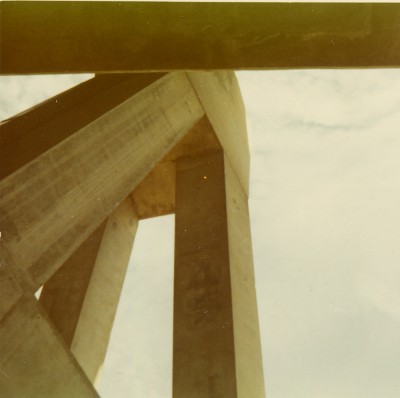 |
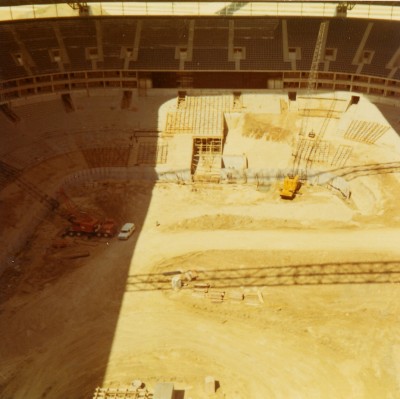 |
A catwalk inside |
A row of lighting |
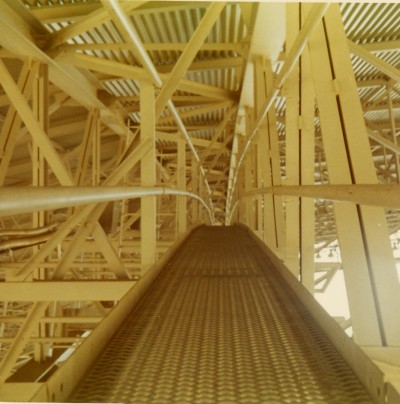 |
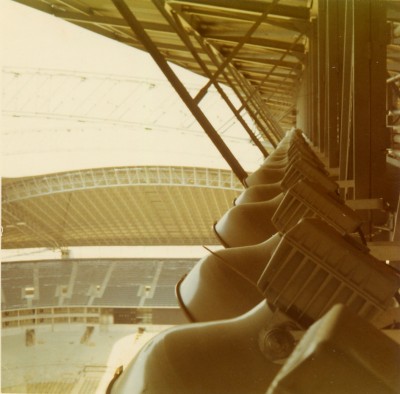 |
After the stadium was finished, the security guard let me go in to take some more pictures.
A shot from the end zone |
Fresh benches |
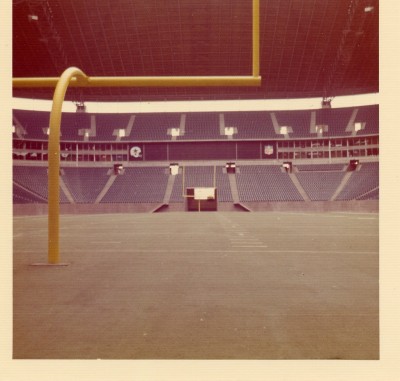 |
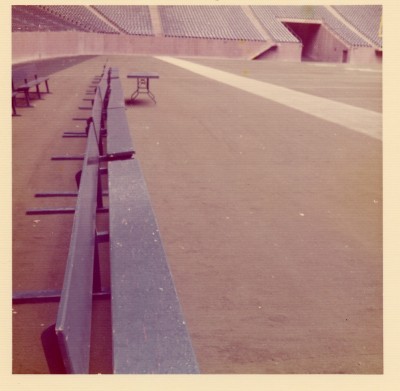 |
The End
|
Here's what the stadium looked like |
39 years later |
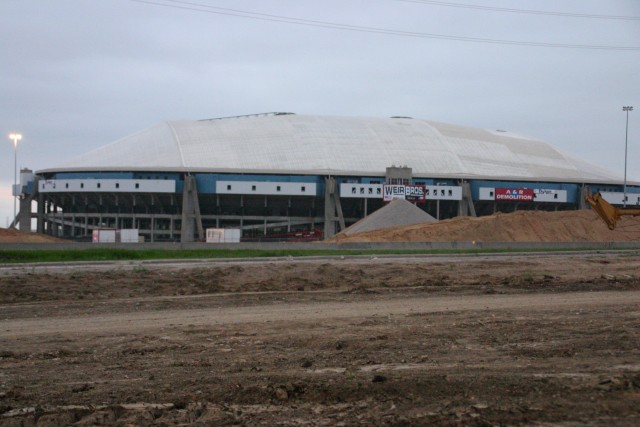 |
The implosion begins |
The implosion continues |
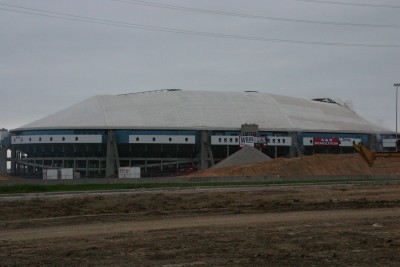 |
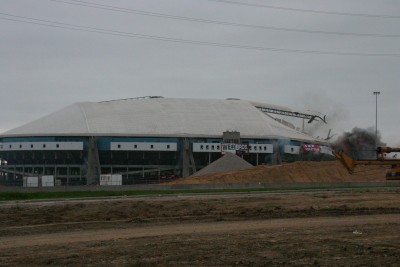 |
More collapse |
As the collapse continues, explosions |
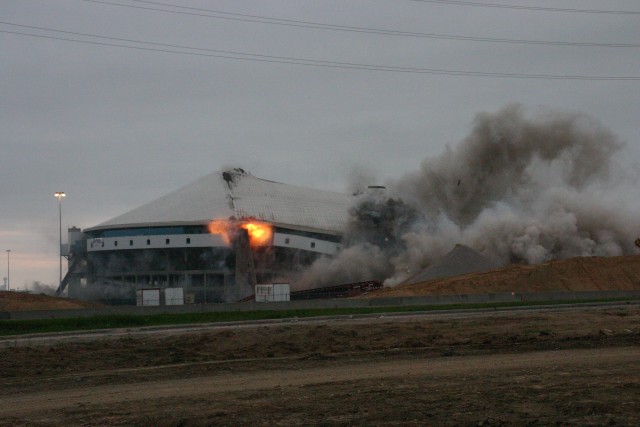 |
Almost gone |
Gone |
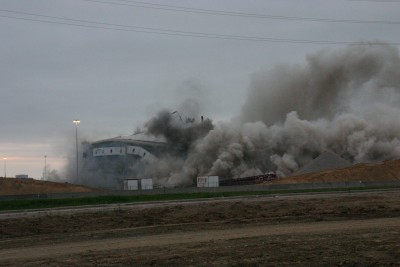 |
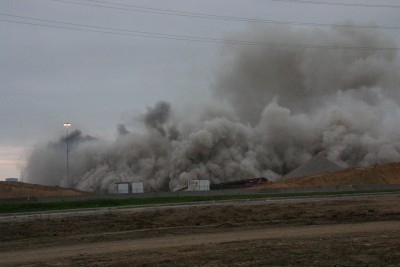 |
|
After the dust clears, all that remains are |
All that's left |
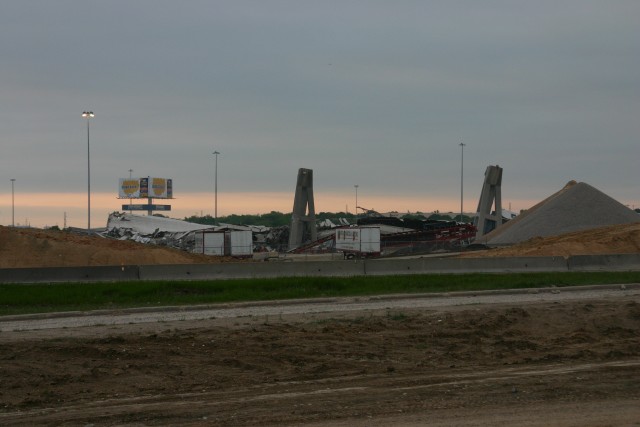 |